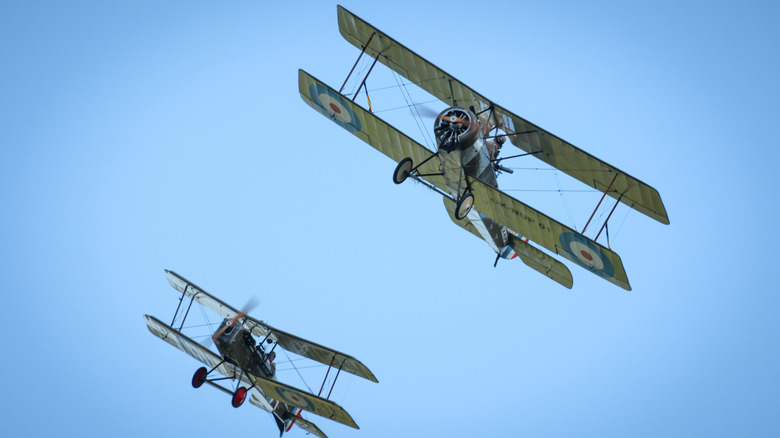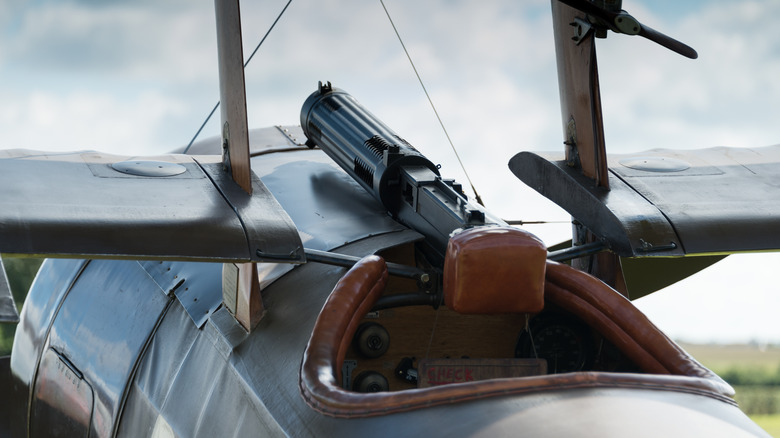How Did WW1 Planes Avoid Shooting Their Own Propellers?
Aerial combat is very complicated on its face, when you think about it. Two or more large metal husks basically have to defy gravity, while also attempting to fire weapons at each other. Accurately. Seems like it shouldn't be possible, right?
Well, beyond the basic ideas of aerodynamics and maneuvering, planes in World War I had another pretty significant hurdle to clear: Actually shooting at each other. Sure, machine guns were commonplace at this point in history, and planes could and did mount lighter guns where they couldn't hit the props, but these weren't as accurate and couldn't accommodate heavier ordnance. A moving gun at the rear that could be fired by another person in the plane was also often used, but it couldn't fire toward the front of the plane.
No, the best spot for a heavier gun that would optimize accuracy and potential damage directed at targets in front of the plane was right behind the propeller. That intricately designed (and wooden) thing letting the plane move through the air. And pilots would have to shoot small bits of metal at very high velocities right through it.
Finding the right gear
An early attempt to keep WWI fighter aircraft from blowing their own propellers to bits when firing was to simply add armor plating to the props, which did keep them from being shredded, but also ended up wasting the rounds that would inevitably hit that plating. So the simpler — and at the same time, more complicated — answer was to avoid hitting the propeller entirely. It all came down to timing via a specialized gear.
The idea had been kicking around for a while, but the Fokker synchronization gear arrived first, built into the German Air Service's Fokker Eindecker toward the end of 1915. It needed to be manually switched on for the pilot to shoot. As the propeller shaft spun, it would also rotate a cam wheel that was linked to the machine gun and timed the shots so they wouldn't hit the prop. Versions of the synchronization gear were rolled out in England and France in 1916.
All of these had problems. Wear and tear would sometimes cause the gun to stop working, or throw off the timing so that the bullets ended up hitting the propellers anyway. Then came the Constantinesco Fire Control Gear, aka the CC Gear, which incorporated hydraulics. A cam synced up with the propeller blade would move a plunger and cylinder, which created a "wave motion" connected to the trigger's motor. This ensured the gun would only fire between the propeller blades.

